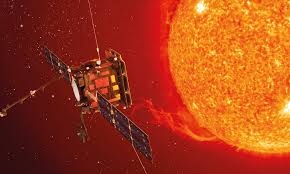
Breaking News
 Battleborn Batteries Responds! Their Overheating Device is a "Feature" not a "Problem
Battleborn Batteries Responds! Their Overheating Device is a "Feature" not a "Problem
 Actor Liam Neeson Outs Himself as MAHA After Narrating Pro-RFK Jr. Documentary Slamming...
Actor Liam Neeson Outs Himself as MAHA After Narrating Pro-RFK Jr. Documentary Slamming...
 Kyle Rittenhouse announced on social media Wednesday that he has tied the knot.
Kyle Rittenhouse announced on social media Wednesday that he has tied the knot.
 JUST IN: President Trump Grants Tina Peters Pardon
JUST IN: President Trump Grants Tina Peters Pardon
Top Tech News
 Build a Greenhouse HEATER that Lasts 10-15 DAYS!
Build a Greenhouse HEATER that Lasts 10-15 DAYS!
 Look at the genius idea he came up with using this tank that nobody wanted
Look at the genius idea he came up with using this tank that nobody wanted
 Latest Comet 3I Atlas Anomolies Like the Impossible 600,000 Mile Long Sunward Tail
Latest Comet 3I Atlas Anomolies Like the Impossible 600,000 Mile Long Sunward Tail
 Tesla Just Opened Its Biggest Supercharger Station Ever--And It's Powered By Solar And Batteries
Tesla Just Opened Its Biggest Supercharger Station Ever--And It's Powered By Solar And Batteries
 Your body already knows how to regrow limbs. We just haven't figured out how to turn it on yet.
Your body already knows how to regrow limbs. We just haven't figured out how to turn it on yet.
 We've wiretapped the gut-brain hotline to decode signals driving disease
We've wiretapped the gut-brain hotline to decode signals driving disease
 3D-printable concrete alternative hardens in three days, not four weeks
3D-printable concrete alternative hardens in three days, not four weeks
 Could satellite-beaming planes and airships make SpaceX's Starlink obsolete?
Could satellite-beaming planes and airships make SpaceX's Starlink obsolete?
A NEW SPACECRAFT IS JOURNEYING TO THE SUN TO GET A NEVER-BEFORE-SEEN...

This weekend, the European Space Agency and NASA are launching a new, hardened spacecraft bound for the center of our Solar System, where it will get a view of our Sun that no vehicle has seen before. The probe, dubbed the Solar Orbiter, will be tasked with observing the Sun's poles, in hopes of better predicting how our parent star behaves.
Up until now, practically all vehicles we have sent toward the Sun have stuck around the star's mid-section, orbiting in line with all the planets in the Solar System. But the Solar Orbiter is set to fly a path around the Sun at a high angle, so that it can get a glimpse of the polar regions that have eluded our observations for so long. Just like Earth, the Sun also has poles on its "top" and "bottom," but they've been hard to see since our planet orbits near the Sun's equator.
Once in this lopsided orbit, the Solar Orbiter will come within 26 million miles, or 42 million kilometers, of the Sun, gathering images and data from a truly unique vantage point. Hopefully, this new information can help scientists figure out some of the mysteries of our star that have remained unsolved for decades. Specifically, they want to know what drives our star's strange 11-year cycle, where it alternates between times of intense activity and times of quiet.
"We understand the cyclic behavior; we've observed it for 400 years, ever since people have pointed the telescope at the Sun," Daniel Müller, the ESA's project scientist for the Solar Orbiter mission, tells The Verge. "But we don't really know why it is 11 years and obviously [what drives] the strength of the cycle."

 First totally synthetic human brain model has been realized
First totally synthetic human brain model has been realized Mach-23 potato gun to shoot satellites into space
Mach-23 potato gun to shoot satellites into space

